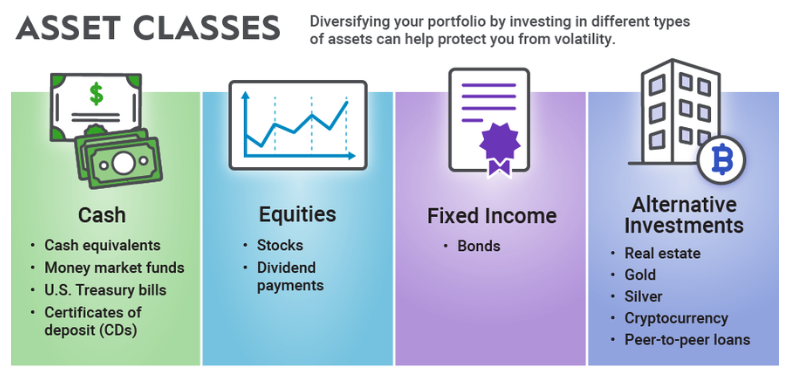Asset Class Selection

Selecting the right asset classes is a key component of building a diversified investment portfolio. An asset class is a group of securities that share similar characteristics and behave similarly in the marketplace. The primary asset classes in investing include equities (stocks), fixed income (bonds), real estate, commodities, and cash or cash equivalents. Each of these asset classes comes with its own risk and return profile, and the right mix depends on an investor's financial goals, time horizon, and risk tolerance. For example, stocks generally offer higher potential returns but come with more volatility, while bonds tend to be more stable but provide lower returns. Real estate and commodities, on the other hand, offer diversification benefits and can serve as hedges against inflation, with real estate offering both income (through rent) and capital appreciation potential.
When selecting asset classes for a portfolio, investors must first assess their financial objectives and risk appetite. Younger investors with a long time horizon may be more inclined to allocate a larger portion of their portfolio to equities, as they have time to recover from market downturns and can afford to take on more risk for potentially higher returns. In contrast, investors nearing retirement may favor more stable, income-generating assets like bonds or dividend-paying stocks, as they prioritize capital preservation and reliable income. The key is to strike a balance that aligns with the investor's goals while managing the overall level of risk. A well-considered mix of asset classes helps smooth out the volatility of any single asset, thereby reducing the overall risk of the portfolio.
In addition to assessing individual risk tolerance, an investor should consider how different asset classes perform in different economic environments. For example, stocks tend to do well during periods of economic expansion, while bonds may outperform when interest rates are low or during recessions. Commodities, such as gold and oil, often act as a hedge against inflation and can provide a safe haven during times of economic uncertainty. Real estate can offer both capital appreciation and income generation, and it often moves independently of stock markets, providing a level of protection during equity market declines. By diversifying across these asset classes, investors can create a portfolio that performs well across different market conditions, reducing the risk of relying too heavily on any single asset class. Rebalancing the portfolio periodically ensures that the allocation stays aligned with the investor’s goals as market conditions evolve.